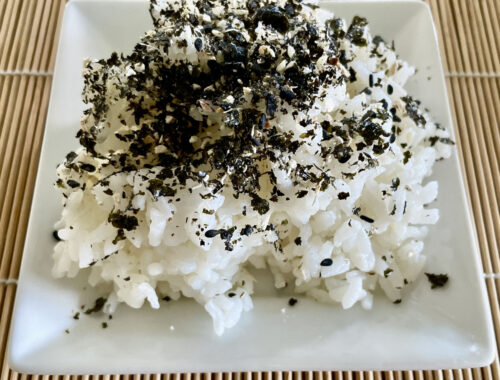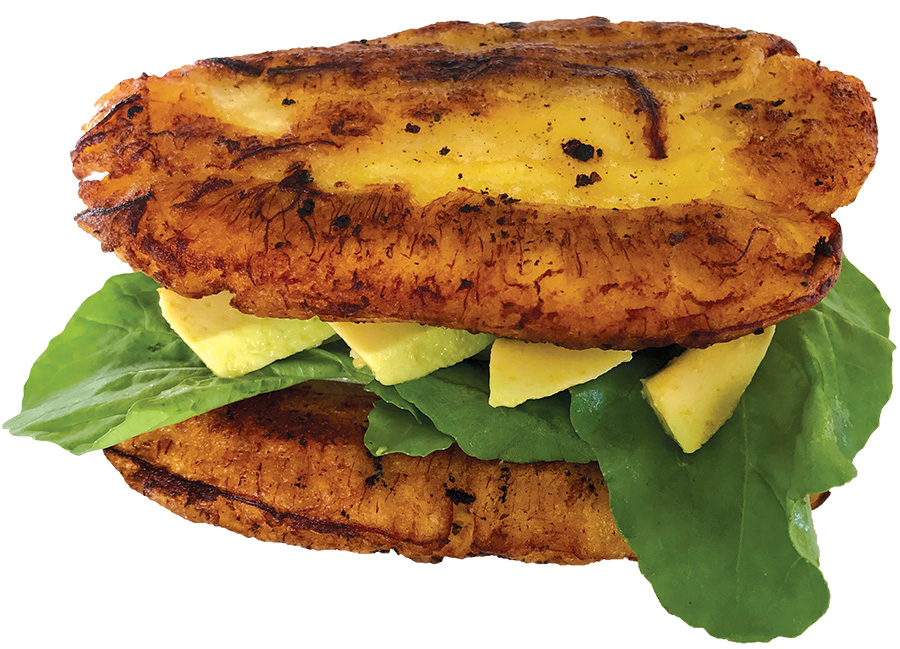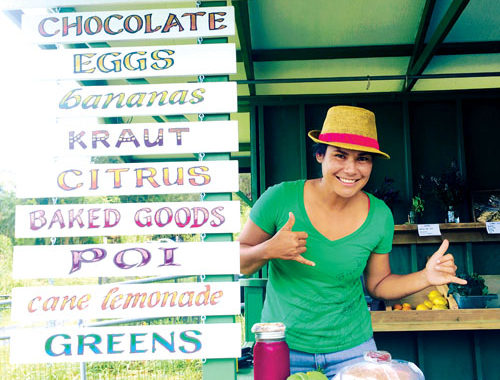The Pineapple: A Symbol of Hospitality
By Sonia R. Martinez
Although the pineapple has long been associated with Hawai‘i, they are actually recent malihini (of foreign origin) residents of the islands.

Pineapples (Anana comosus) are thought to have originated in Paraguay or Brazil and were used as trade or barter by the Carib Indians through their travels to the islands of the Caribbean, where they eventually were found by Columbus’ crew during their “discovery of the New World” and named piñas.
Three hundred years later, in the 1700s, pineapples found their way to Hawai‘i where they eventually became synonymous with the islands. The Hawaiian name for the pineapple is hala kahiki, or foreign fruit.
Pineapples are an herbaceous plant belonging to the Bromeliaceae family and the only bromeliad to produce edible fruit. Believe it or not, the fleshy and oh-so-juicy part of what we consider the fruit is not considered a fruit at all. The fruit is actually those little scales on the pineapple rind.
Pineapples are loaded with Vitamin C and were used during the days of the early sea explorers to prevent scurvy among the crews.
The stem of the pineapple is a source for the protein-digesting enzyme Bromelain and used as a meat tenderizer. This is why pineapples can’t be used in gelatin molds, since the enzyme breaks down the congealing proteins.
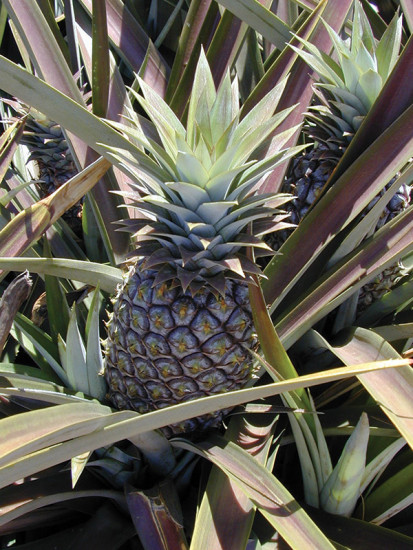
Pineapples are easily reproducible by planting the tops. It takes at least 18 months for the plant to produce fruit and each plant produces only one pineapple. Sometimes you can get a second harvest from a plant, and it will be a much smaller pineapple and not deemed commercial quality. This is one reason pineapples grown on the island can be much more expensive than those from countries where growing them is not as costly due to scarce land space.
Pineapples were very expensive during the Colonial days, and during the holidays, any hostess worth her social status made sure to display pineapples in her table centerpieces or attached to Della Robbia style wreaths. This is how they became a symbol of hospitality.
I like using pineapples in many ways, mostly in salads or desserts and also as dried fruit in cakes and quick breads (see the recipe for the Tropical Fruitcake in the November-December 2013 issue of Ke Ola Magazine).
Agua Fresca de Piña
Agua Fresca de Piña is a refreshing drink and wonderful thirst quencher on a hot summer day and can be made using the discarded parts of a fresh pineapple when preparing one to eat outright or for a recipe.
Take all peelings and center core and any other part you have discarded and place them in a pot with water and a bit of sugar. (Be sure to save the green top for planting!) Bring to a boil, turn down to simmer, and cook for about half an hour to concentrate the taste. Pass through a colander and pour into a pitcher. Serve ice cold.
Mixed Fruit Salad
I also like to scoop out the insides and use the shell as a vessel for holding a mixed fruit salad or as a container for a sweet dip—Greek yogurt, turbinado sugar, and a touch of Grand Marnier—when serving a mixed fruit platter.
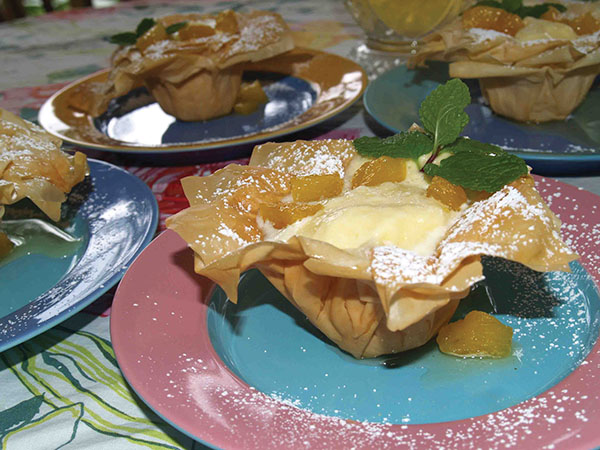 Pineapple Dessert Baskets
Pineapple Dessert Baskets
Easter will soon be here, and I kept thinking of what I could serve as dessert for our Easter celebration when I thought of making little ‘baskets’ with either phyllo dough or puff pastry.
To form the baskets, turn a muffin tin upside down and spray the outside bottom of each cup with cooking or baking spray. Prepare your pastry as per package instructions or make your own pastry. Cut in squares to fit over the bottom of each mold. I used four squares of Phyllo pastry per cup. Bake until golden brown and flaky. Cool completely before using.
Fill each cup with your favorite ice cream or sorbet, homemade or store-bought. (The cups in the picture were filled with a homemade pineapple sorbet which I made in the Vitamix—pineapple pieces, ice, and a bit of sugar.) Top with chopped pineapple cooked in syrup—small amount of water, a bit of sugar, dried vanilla bean, and either fresh or dried chopped pineapple pieces and boil until the pineapple is tender and translucent.
Dust powdered sugar over the filled basket or on the plate before placing the little basket on it. Rinse, air dry, and save the vanilla bean for other future uses or dip it in a jar of refined sugar for several weeks. The sugar will absorb the vanilla taste. ❖
Recipe photo by Sonia R. Martinez. Contact writer Sonia R. Martinez: SoniaTastesHawaii.com
